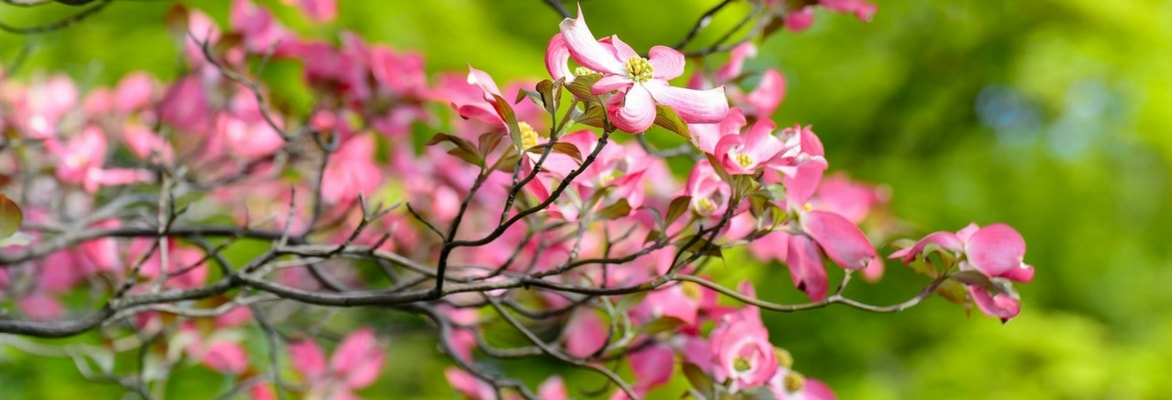
Flowering dogwoods: planting, pruning and maintenance
Contents
Flowering dogwoods, in a nutshell
- Flowering dogwoods offer an elegant and spectacular spring flowering.
- Their large graphic flowers are formed of four large pink, white, or yellow bracts.
- They feature decorative leaves that take on beautiful brown, red, or orange hues in autumn.
- They are covered in fleshy fruits, which are very decorative and provide an original display in autumn, delighting local wildlife.
- They live long and thrive in partial shade, in any cool, humus-rich soil.
A word from our expert
Beauty and elegance are the key words to describe flowering dogwoods (Cornus in Latin) with their enchanting charm.
In winter, their elegant silhouette is first noticed. Then, at the beginning of spring, small green bracts surrounding an oval heart adorn the branches. As they bloom, the flowers grow, whiten or colour depending on the varieties. They then transform into red fruits resembling strawberries.
By August, the leaves begin to turn crimson, leading to a true festival of colours in autumn.
There are species with both deciduous and evergreen foliage. Some varieties also offer variegated leaves, enhancing the garden for a good part of the year.
Depending on the species, flowering can last for several months. The earliest are Cornus nuttallii, whose flowers appear as early as April and continue into May. Then, the Cornus florida take over from May to June, followed by the later Cornus kousa, which bloom from May to July.
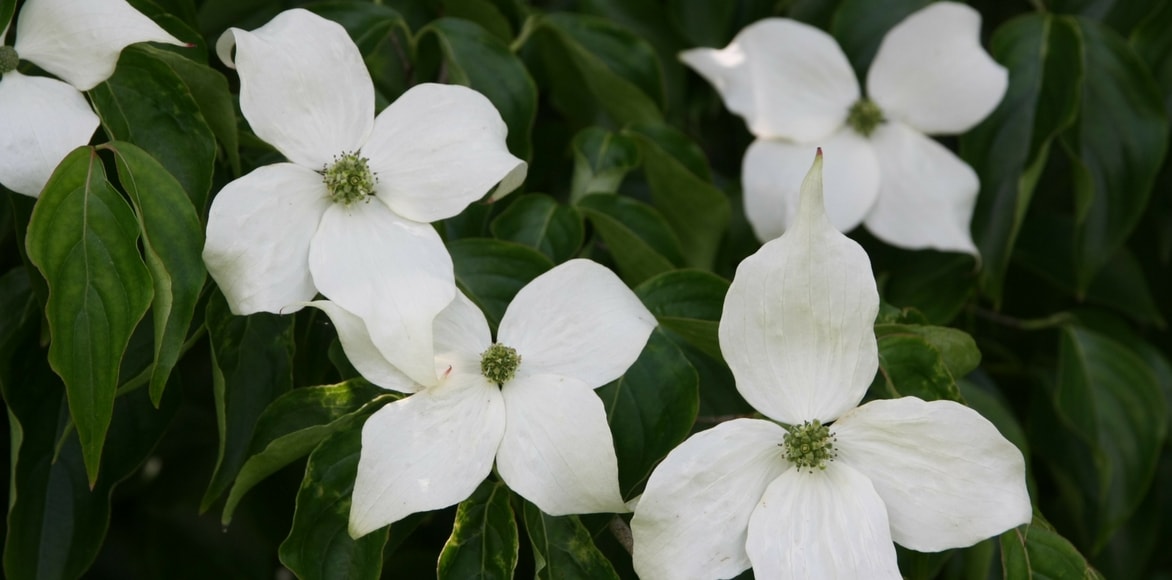
The elegant flowering of Cornus kousa
Their natural elegance is highlighted when planted alone, but they can also be used in a free hedge or in a border.
Flowering dogwoods are easy to grow and require no maintenance once established.
Slow-growing shrubs, they need optimal conditions to thrive and develop: a filtered exposure, rich humus soil, cool, light, and free of lime are the essential key points to ensure a unique and perpetual display.
Botany
Botanical data
- Latin name Cornus florida, Cornus kousa, Cornus nuttallii, Cornus rutgersensis, Cornus hongkongensis, Cornus capitata, Cornus angustata
- Family Cornaceae
- Common name flowering dogwoods, Dogwood for English speakers, Florida dogwood, Chinese flowering dogwood, strawberry tree, Nuttall's dogwood, Pacific dogwood, Bentham's dogwood, strawberry tree
- Flowering from April to July
- Height from 2.5 to 8 m
- Exposure non-burning sun, partial shade, light shade
- Soil type acidic to neutral, humus-bearing, cool and well-drained
- Hardiness from -10°C for Cornus hongkongensis, capitata and angustata, -15°C for Cornus nuttallii and rutgersensis, -20°C for Cornus kousa and florida
La famille des cornacées est représentée par environ 40 espèces de Cornus (selon les classifications botaniques), eux-même subdivisés en plusieurs sous-genres dont les Cornus, Swida, Chamaepericlymenum, Benthamidia et les hybrides. Ce sont ces deux derniers qui regroupent les cornouillers à fleurs dont nous allons parler ici : Cornus kousa, florida, nuttallii, (x) rutgernensis, hongkongensis, capitata et angustata.
Les cornouillers ligneux sont originaires des régions tempérées de l’hémisphère nord (Europe, Asie ou Amérique du Nord) où ils poussent spontanément en lisière de forêts ou en sous-bois. Ils présentent des ports coniques, évasés et offrent une silhouette élégante.
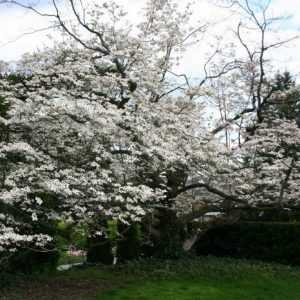
Cornus florida
Étymologiquement, le mot cornus désigne en latin la corne, faisant allusion à la dureté du bois de ceux-ci. Le bois des espèces ligneuses était utilisé autrefois pour confectionner des manches d’outils, des barreaux d’échelle, des lances, des arcs ou encore des javelots.
Les cornouillers à fleurs forment de petits arbres ou de grands arbustes caducs ou persistants allant de 2,5 m à 8 m de hauteur selon les espèces. De par leur croissance assez lente et leur taille restreinte, ils s’adaptent tous très bien dans un petit jardin notamment les variétés au feuillage panachés qui poussent lentement.
Ils sont dotés de fleurs non parfumées qui apparaissent dès la fin avril en climat doux pour les variétés précoces et jusque juillet pour les variétés tardives. Les Cornus nuttallii sont les premiers à fleurir dès le mois d’avril. Ils sont suivis des Cornus florida. Cette précocité fait que leurs boutons floraux sont sensibles aux gelées printanières. Les Cornus kousa débourrent plus tard, ils sont donc à privilégier dans les régions où les gelées tardives sont courantes. La floraison apparaît avant les feuilles voir en même temps et se prolonge de quatre à six semaines. A noter que les cornouillers à fleurs offrent d’abondante floraison une année sur deux.

Evolution of flowers and leaves of Cornus kousa.
De petites « fleurs » vertes apparaissent puis grandissent en devenant de plus en plus blanches pour se nuancer de rose avec l’âge. Exception faite pour capitata dont les bractées sont plutôt jaunes crème. Les fleurs sont formées de quatre (voir plus pour nuttallii) grandes bractées pétaloïdes réunies en involucre, autour d’un glomérule (contenant les vraies fleurs, minuscules) de 1 à 2 cm de diamètre. Les bractées, plus ou moins arrondies, peuvent être blanches, mouchetées de framboise, roses ou encore jaunes selon les variétés. Ce sont elles qui font toute la beauté gracieuse de ces plantes.
Les feuilles simples sont d’un vert moyen ovales, ondulées et pendantes. Elles sont portées par de jeunes rameaux verts qui deviennent rougeâtres côté soleil avant que l’écorce ne présente des nuances grises et cuivrées du plus bel effet selon les espèces. Dès le mois d’août, le feuillage des espèces caduques commence doucement à se colorer pour finir avec de spectaculaires teintes flamboyantes rouges violacées à l’automne.
Les variétés de Cornus florida aux feuilles panachées gagnent à n’être plantées rien que pour la beauté de leur feuillage, même si la floraison n’est pas toujours au rendez-vous aux printemps rigoureux.
Après la floraison, les cornouillers offrent des fruits composés décoratifs, de 2 à 3 cm de diamètre, dès la fin de l’été jusque décembre s’ils ne sont pas mangés avant. Ovoïdes, charnus, virant au rouge à maturité, les cornouilles (le nom donné aux fruits) sont très appréciés des oiseaux. Certains sont comestibles mais peu goûteux, les autres ne doivent pas être consommés. Chez les kousa, la pulpe possède une saveur douce et agréablement parfumée mais celle-ci ne fait pas oublier l’amertume de la peau. Avec ses airs de fraises (ou de litchi), les fruits du Cornus kousa sont pourvus d’une dizaine de graines entourées de pulpe. Le fruit comestible est parfois utilisé pour faire du vin.
Ils sont tous plus ou moins rustiques chez nous avec une mention spéciale pour les Cornus kousa et florida qui résistent à des températures de l’ordre de – 20°C. Nuttallii et rutgersensis peuvent être justes dans les régions les plus exposées au froid, – 15°C sera le minimum. Enfin, Cornus hongkongensis, capitata et angustata seront réservés aux climats les plus cléments avec un minima de -10°C.
The different species
There are nine species of dogwoods with bracts. As for the varieties, there are many different habits, varied colours, flowering periods that are more or less early, diverse origins, and the vast majority are deciduous. However, they all share two common points: the beauty of a spectacular flowering and a vibrant autumn colouring that leaves a lasting impression.
- Florida Dogwood – Cornus florida
Flowers in May/June – Height at maturity: 6 m
Native to North America, the Dogwood produces countless cymes in spring adorned with four large white or pink bracts. By the end of summer, red berries appear. Its scarlet autumn foliage is truly stunning. This species is sensitive to late frosts. It requires acidic soil and a high ambient humidity level. It is susceptible to anthracnose, so it is advisable to avoid injuries as much as possible.
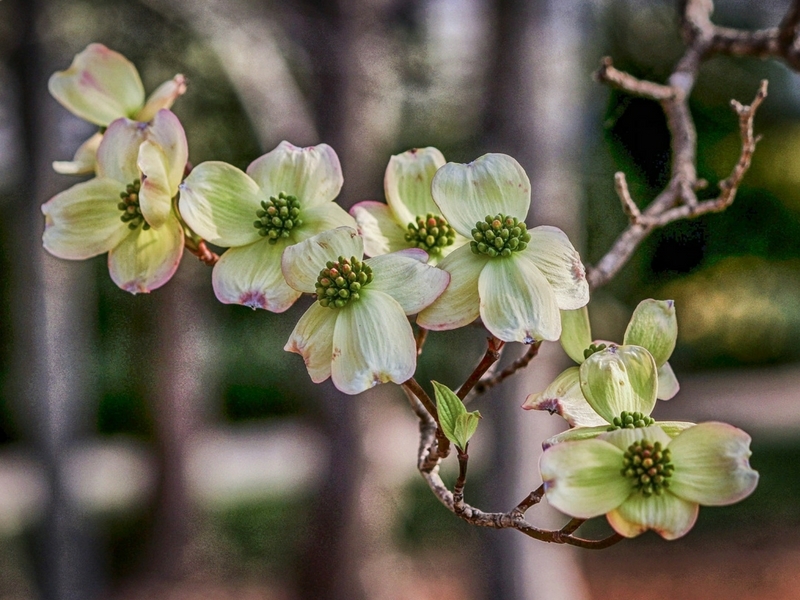
Cornus florida
- Chinese Dogwood or Japanese Dogwood – Cornus kousa
Flowers from May to July – Height at maturity: 4 to 5 m
Native to Japan, China, and Korea, and introduced to Europe in 1875, it is more commonly planted in our gardens as it is less demanding and of more modest size than its American cousin. It is the latest to flower, thriving well in non-burning sunlight as long as the soil does not dry out. Too much shade hinders its flowering. It is the easiest to grow and is also very resistant to anthracnose. It adapts quite well to clay soils that are low in or free from lime.
- Pacific Dogwood – Cornus nuttallii
Flowers from April to May – Height at maturity: 8 m
It is native to the West Coast of the United States, where it can reach 15 metres! However, in our gardens, it does not grow as tall. It is the earliest, which means its flowering can be devastated by late frosts, common in certain regions of France. The inflorescences, 10 to 12 cm in diameter, display four to seven large white bracts that turn pink with age. The autumn colours range from yellow to red. It requires distinctly acidic soil. Its longevity is limited, especially as it is not very hardy, but it can succeed in a rainy, sheltered, and semi-shaded climate. It can be affected by anthracnose.
- Rutgers Dogwood – Cornus (x) rutgersensis
Flowers from May to July – Height at maturity: 4 to 6 m
This is the result of a cross-breeding between Cornus florida and Cornus kousa. It offers a generous wave of white or pink bracts. There are several cultivars, including the magnificent ‘Stellar Pink’, as well as ‘Galaxy’ and ‘Aurora’.
- Hong Kong Dogwood – Cornus hongkongensis
Flowers in June/July – Height at maturity: 4 to 6 m
It is related to Cornus kousa. It forms a large bush with young bronze, leathery, and evergreen foliage. Its growth is rapid, but its hardiness does not extend beyond -10 / -12°C. It is easy to grow and is not susceptible to diseases.
- Himalayan Dogwood – Cornus capitata (syn. Dendropenthamia capitata)
Flowers in June/July – Height at maturity: 5 m
Also known as Bentham’s dogwood or strawberry dogwood, it is native to the Himalayas but can also be found from India to China, passing through Nepal. This Cornus evergreen forms a beautiful rounded tree in its native territory. Here, it will hardly exceed 5 m in height. Its large butter-yellow bracts are an original shade for a flowering dogwood. It is reserved for mild climates where temperatures do not drop below -10°C in very sheltered situations and for a short period.
- Angustata Dogwood
Flowers in July – Height at maturity: 7 m
Also called Cornus elliptica or Cornus kousa var. angustata. This is a medium-sized tree with evergreen and leathery foliage. Each cyme consists of four pointed white bracts, slightly smaller than those of capitata. The fruits are edible and sweet. If conditions allow, it can re-flower in early autumn, and the flowering is more abundant if planted in a sunny spot. It is hardy down to -10°C.
Discover other Cornus
View all →Available in 0 sizes
Available in 0 sizes
Available in 2 sizes
Available in 1 sizes
Available in 2 sizes
Available in 2 sizes
Available in 1 sizes
Available in 3 sizes
Available in 4 sizes
Available in 2 sizes
The different varieties of flowering Cornus
Our favourite varieties:

Cornus kousa subsp. chinensis Great Star - Flowering Dogwood
- Flowering time July to September
- Height at maturity 3 m
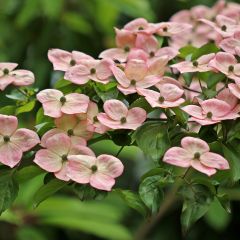
Cornus kousa Satomi - Flowering Dogwood
- Flowering time June, July
- Height at maturity 3,50 m
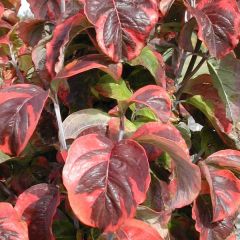
Cornus florida Rainbow - Flowering Dogwood
- Flowering time June, July
- Height at maturity 4,50 m
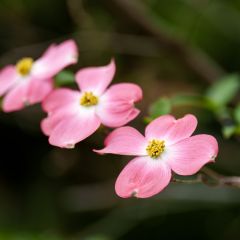
Cornus florida Rubra - Flowering Dogwood
- Flowering time June, July
- Height at maturity 6 m
Other varieties to discover:
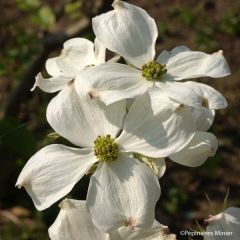
Cornus florida Cherokee Daybreak - Flowering Dogwood
- Flowering time June, July
- Height at maturity 2,50 m

Cornus Venus - Flowering Dogwood
- Flowering time June, July
- Height at maturity 5 m
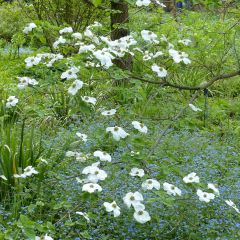
Cornus Ascona - Flowering Dogwood
- Flowering time May, June
- Height at maturity 5 m
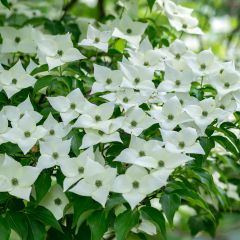
Cornus kousa Milky Way - Flowering Dogwood
- Flowering time June, July
- Height at maturity 5 m
Read also
14 unusual fruitsPlanting Flowering Dogwoods
Where to plant?
Flowering cornus prefer soils that are slightly acidic to neutral, humus-bearing, cool but well-drained.
Most cornus do not appreciate high temperatures and thrive in partial shade.
Plant them under the cover of large trees, but ensure that the canopy is not too dense, as this can hinder flowering. This way, their foliage is protected from the burning and drying rays of the afternoon sun, as well as from spring frosts that can damage it.
However, Cornus kousa and florida can grow in full sun in oceanic and temperate climates, where they maintain a beautiful shape and generous flowering.
It is possible to grow flowering cornus of small dimensions, particularly kousa such as ‘Satomi’ or ‘Great Star’ in very large pots (minimum 60 cm in diameter). Be careful, the substrate must remain cool, neither too wet nor too dry.
To achieve this, make a mixture: 1/3 of soil from your garden, 1/3 of compost, and 1/3 of pumice, peat, or clay balls for drainage. Regularly check that the soil in the pot is not dry.
Place the pot in a sheltered location from cold or drying winds.
When to plant?
Plant flowering cornus in autumn or spring. By planting in October, the Cornus have time to settle in well before winter, making recovery easier the following spring, and they will require less care. They will therefore be more resistant to drought. In cold regions, favour planting in spring once the risk of severe frosts has passed.
How to plant?
To plant a flowering cornus:
- loosen the soil to a diameter of 80 cm and a depth of 60 cm.
- Add a good amount of leaf mould, compost or well-rotted manure and peat, pumice or clay balls to improve drainage if necessary. Mix.
- Submerge the root ball of your cornus (with its pot) in a bucket or basin filled with water. When you no longer see bubbles on the surface, the root ball is well moistened.
- Dig a hole two to three times larger than the root ball, so that the roots can develop well.
- Place your cornus in the centre, ensuring that the collar is level with the soil.
- Replace the soil around the root ball and gently firm it with your hands.
- Water generously and mulch with dead leaves or mulch to a depth of 10 cm to keep the base cool.
- Water regularly in the first year at the rate of one watering can per week during summer, preferably in the evening.
Flowering cornus are not difficult to grow, but they require careful planting.
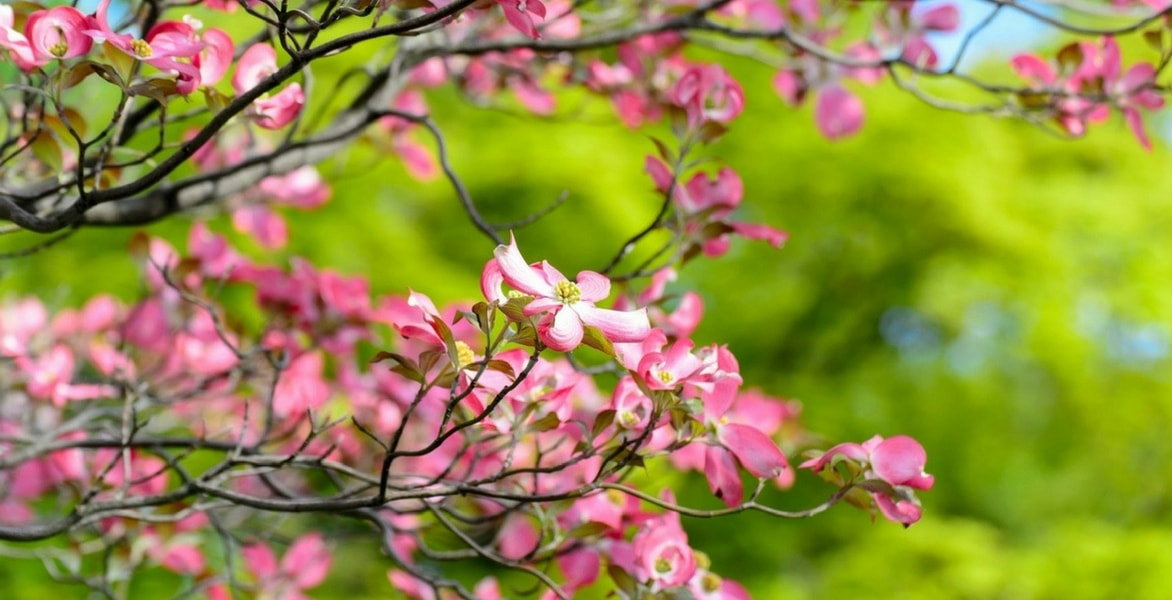
Maintenance
The soil must not be dry in summer and waterlogged in winter! Flowering dogwoods are sensitive to water stress. We recommend using mulch to maintain moisture and also to protect the roots from the harshness of winter.
Water regularly in the first year, one watering can per week. After that, watering is unnecessary except in areas where drought is common.
For plants grown in large pots, you can add slow-release fertiliser pellets.
Flowering dogwoods can be affected by anthracnose (or coal disease). Cornus florida and nuttallii are more susceptible. This is a fungal disease caused by fungi. Anthracnose manifests as the appearance of brownish spots bordered with purple, and necrosis on the leaves and branches.
 Symptoms of coal disease on the foliage[/caption>
Symptoms of coal disease on the foliage[/caption>
These fungi take advantage of wounds to enter, so do not prune. Just remove dead wood. Do not water the foliage and burn the leaves that show signs of anthracnose, as well as those that have fallen to the ground. Burn heavily affected plants to limit contamination. Choose florida cultivars that are less susceptible to the disease, such as ‘Sunset’, ‘Cherokee Princess’, or ‘Springtime’.
Powdery mildew can also affect dogwoods. A white fluff can be observed on the leaves. These become distorted and dry out. This disease can appear when it is humid and there are significant temperature differences between day and night. Good air circulation between plants helps to prevent the fungus.
Pruning Flowering Dogwoods
No pruning is necessary. Cleaning is limited to dead branches in March. You may optionally remove crossing branches or contain its growth in width, but this will harm its silhouette.
That said, caution is the mother of safety: avoid pruning Cornus florida and nuttallii which are more sensitive than other species to anthracnose. Fungi take advantage of wounds to enter. Also, be careful not to mow too close to the low branches!
Multiplication
Multiplying Flowering Dogwood is not easy. However, if you wish to give it a try, you will need to proceed by sowing, propagation by cuttings or grafting.
Sowing
Sowing a Cornus requires a lot of time and patience to see the first flowering appear.
Indeed, it takes several months to observe germination and 12 to 20 years to see the tip of a bract. If you still want to attempt this, you will first need to remove the harvested seeds from their pulp and sow them fresh. Then, you should place them in a shaded area of the garden so that they undergo what is called winter stratification. These seeds need a period of cold to break their dormancy and germinate.
Propagation by Cuttings
If you want to try, take sections of semi-ripe stems about 15 cm long in August or September.
In a shaded area that allows you to maintain a temperature of around 18°C, plant the cuttings in a mixture of garden soil (non-calcareous) and river sand to lighten it. When the rooting is sufficient (about 2 to 3 months), carefully transplant the cuttings into buckets and winter them under a cold frame or another location where the temperature does not drop below 12°C. Transplanting to the garden will only occur 2 to 3 years later, and the first flowering will take place many years after that.
Be aware that professionals resort to grafting (preferably shield grafting) in July/August. The rootstock can be a Cornus kousa var. Chinensis, for example. Obviously, grafting requires specific skills.
Association
It is in isolation that flowering dogwoods are at their most beautiful, showcasing their elegant natural silhouette and generous flowering. However, you can perfectly create plantations at their base. It is also possible to accompany them with other bushes in a free hedge or in a border.
We recommend pairing them with rhododendrons, azaleas, pieris, and other acid-loving plants. Combining them with evergreen bushes that flower at different times is also a good idea. This way, the flowerings follow one another… You can choose from Viburnum tinus, camellias, Choisya ternata, Ilex, etc.

Rhododendron ‘Percy Wiseman’, Viburnum tinus ‘Eve Price’ and Pieris japonica ‘Valley Valentine’
Under the cover of cornus, it is also the ideal place to install shade-loving plants:
Useful resources
- Discover our wide range of Cornus on our site
- Advice sheet – Mulching, why and how?
- Sheet on Planting perennials and bushes
- Article by Pascal on our blog: “The Japanese dogwood, the embodiment of elegance”
- Article by Didier Willery, published in L’Ami des Jardins et de la Maison: “Everyone has their flowering dogwood!“
- Find our advice sheet: 10 dogwoods for a small garden
- Learn more about bushes and plants with unusual fruiting in our advice sheet
Frequently asked questions
-
My strawberry tree has yellow leaves!
Flowering Cornus do not appreciate soils with a pH that is too high, nor overly compacted soils, otherwise they suffer from chlorosis. The yellowing of the leaves is due to a deficiency (most often in iron). You can replant your Cornus under suitable conditions, but it is important to choose plants based on the conditions you can provide in your gardens.
-
Help, my Dogwood isn't flowering!
No need to panic, flowering can take several years to appear, especially if your Cornus is from sowing. Also, be aware that too dense shade can hinder flowering. Finally, Cornus nuttallii and florida are sensitive to spring frosts. Their flower buds form as early as February, and flowering is often destroyed by late frost.
-
The leaves of my Cornus are drying out! Why?
Flowering dogwoods do not tolerate scorching situations, drying winds, and late frosts can also cause damage to their leaves and flowers. We recommend planting them in partial shade, under the canopy of larger but not too dense trees, such as in light woodlands. Exceptions are Cornus kousa and Cornus florida, which can withstand sunlight as long as the soil remains cool.
-
The leaves of my dogwood are turning brown, what is happening?
Leaf browning can have two causes. Either the plant is lacking water, or its roots are suffocated in heavy, poorly drained soil. Simply observe the soil in that area. If it is dry, water generously and apply mulch. Repeat watering regularly, especially in summer. If it is too wet, you will need to uproot the Cornus, trying to keep a good clump of soil around its roots. Improve drainage by adding turf, pumice, or clay balls to a depth of 60 cm. Replant your dogwood, water, and mulch.
-
There are blackish spots on the leaves of my flowering dogwood! What should I do?
These are necroses; your dogwood is affected by anthracnose. Burn the parts affected by the fungus to limit contamination. Plants weakened by summer drought or injury are more susceptible to contracting the disease. Avoid watering the foliage and improve air circulation around the trees to help dry the leaves and contain the fungus.
- Subscribe!
- Contents































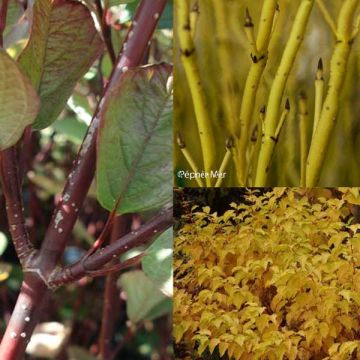
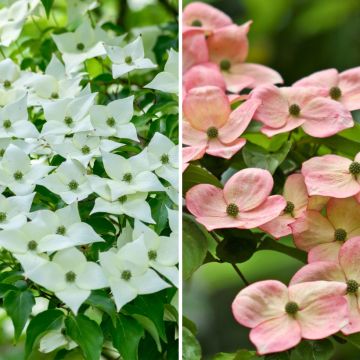
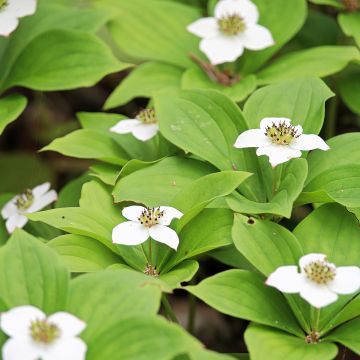
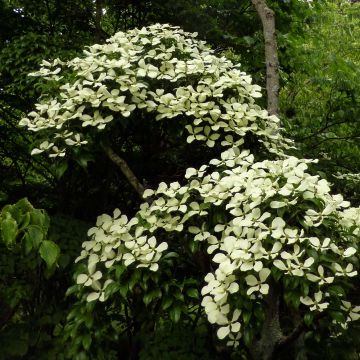
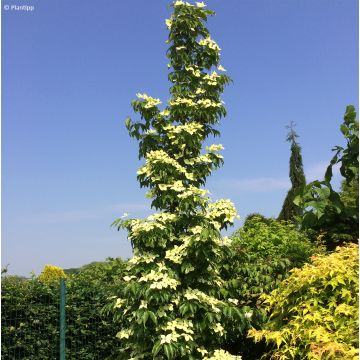
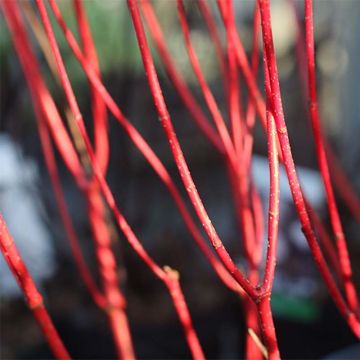
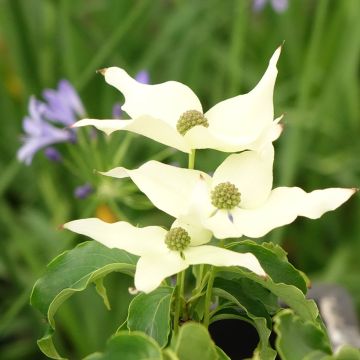
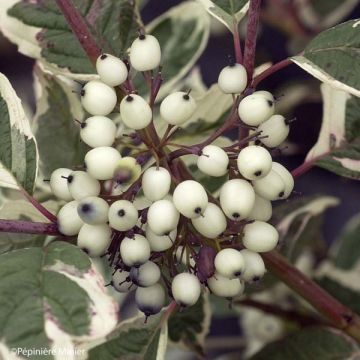
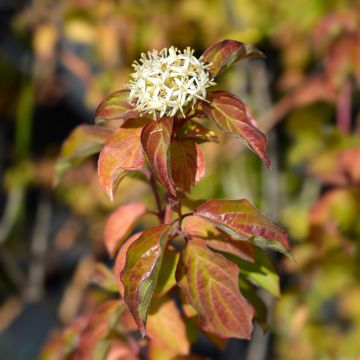
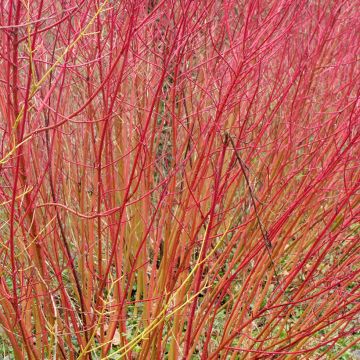

Comments